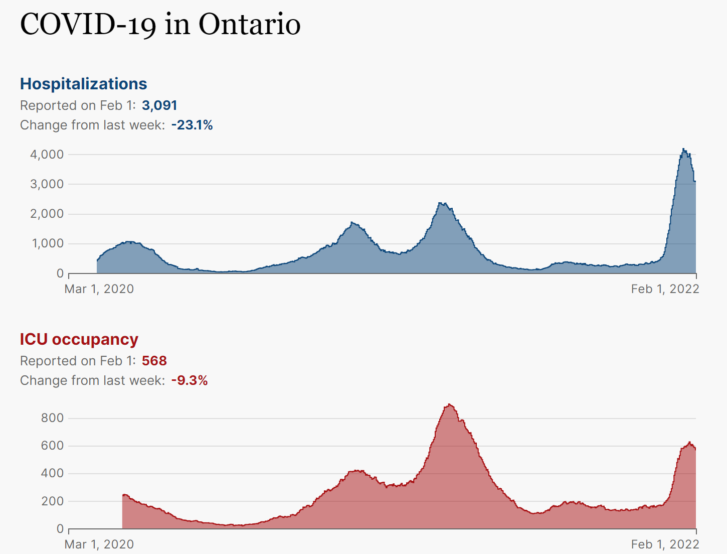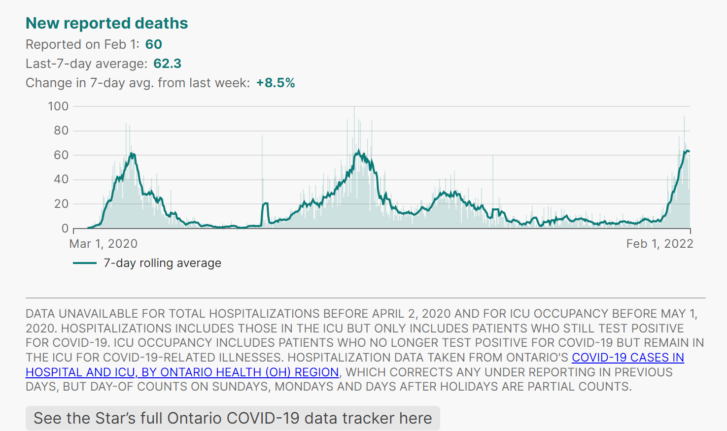Speeding the pace of vaccinations and boosters will help keep hospitalizations down, the science table says.
How many Ontarians caught COVID-19 in the Omicron wave?
New data from the science table advising Premier Doug Ford’s government estimates a wide but “plausible range” of between 1.5 million and four million people since Dec. 1 based on surveillance testing of virus levels in wastewater.
Cases peaked around Jan. 11, according to modelling released Tuesday that confirms what health officials have been saying — the Omicron wave has crested — but cautions that hospitalizations could “rebound” to new highs in late February and into March following this week’s reopening.
The lack of widespread PCR testing, limited to health care workers and high-risk populations just before Christmas and amid a shortage of rapid test kits, makes everything more difficult to predict, the science table acknowledged.
“All those factors make it challenging to model the current wave and estimate of the impact of reopening,” a statement said.


Science table science director Dr. Peter Juni said closely monitoring early indicators such as wastewater and test positivity rates, adjusting public health measures as necessary, is key to keeping the virus in check.
Health Minister Christine Elliott’s office agreed hospitalization levels for COVID patients, while declining lately, will “continue to be difficult for our hospital partners” which are still facing staff shortages.
But “we are confident in our ability to ensure capacity so that patients can access the care they need,” said Elliott spokeswoman Alexandra Hilkene.
“Ontario is currently trending between the projected best and moderate-case scenario for hospitalizations and we have sufficient capacity to meet such demand. Similarly, the province has sufficient ICU capacity to respond to any scenario outlined in the modelling.”
Previous modelling by the science table overestimated the impact on hospital intensive care units and assumed Omicron was as virulent as the previously dominant Delta variant, which is not the case.
However, the higher transmissibility of Omicron pushed hospitalizations to a series of pandemic records in January and prompted the transfer of more than 450 patients “to prevent hospital resources from being overwhelmed,” the science table said.
Data shows hospitalizations and intensive care unit admissions for the unvaccinated began a steep spike upwards around Dec. 28. Unvaccinated ICU admissions were 2.5 times the rate of the fully vaccinated and hospital admissions were six times higher.
Speeding the pace of vaccinations and boosters will help keep hospitalizations down, the science table said, noting the pace of shots “is slowing down in all age groups.”
Article From: The Star
Author: Rob Ferguson

